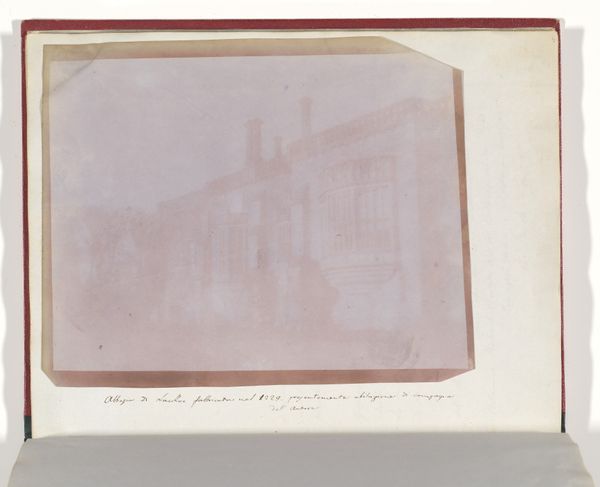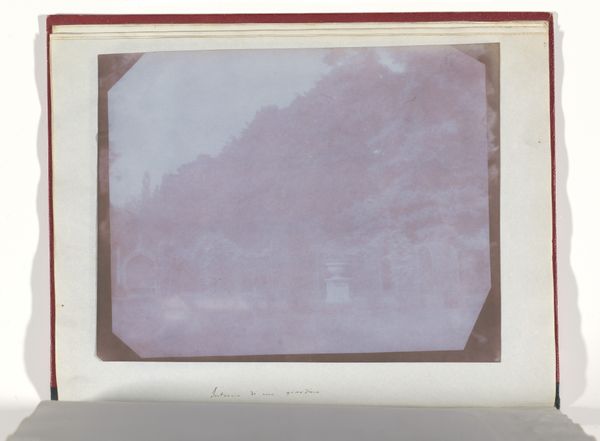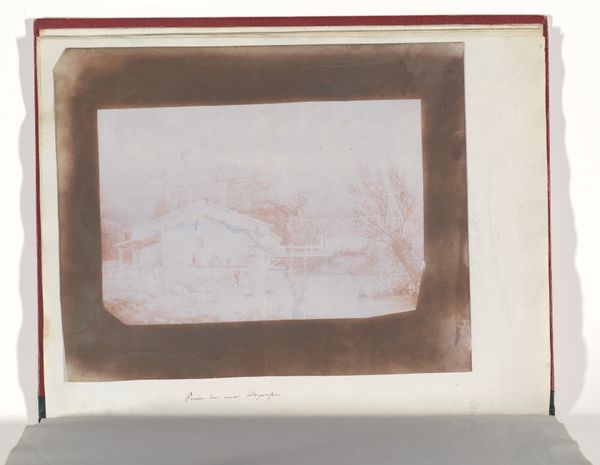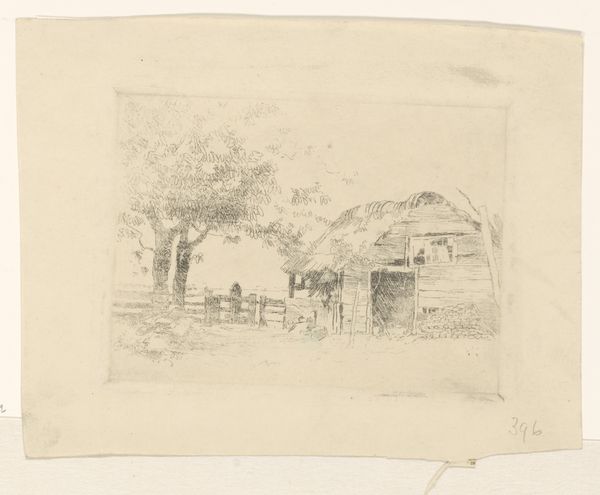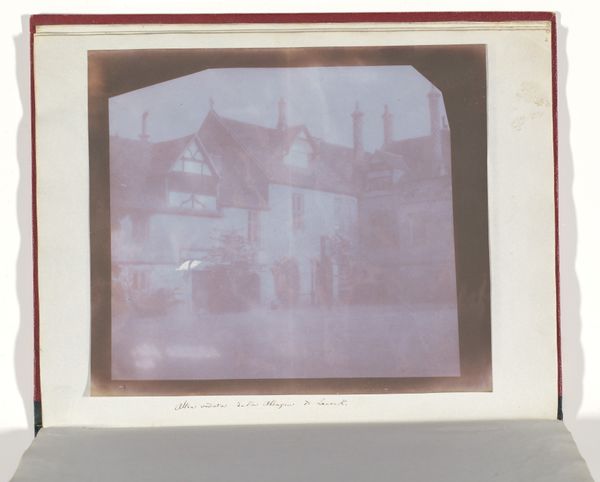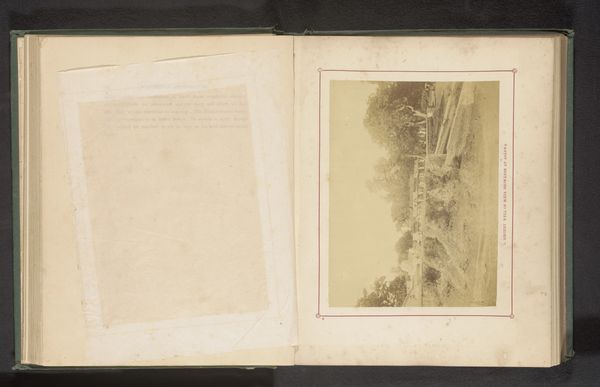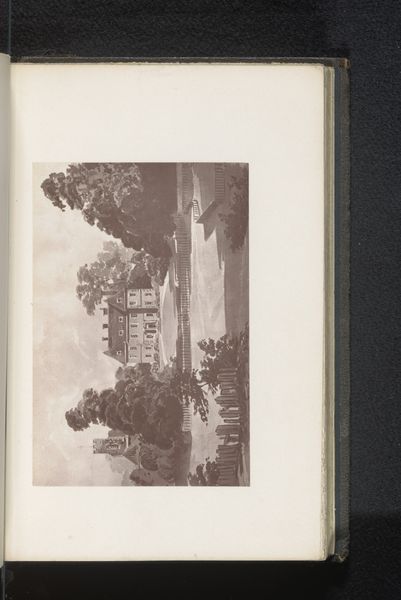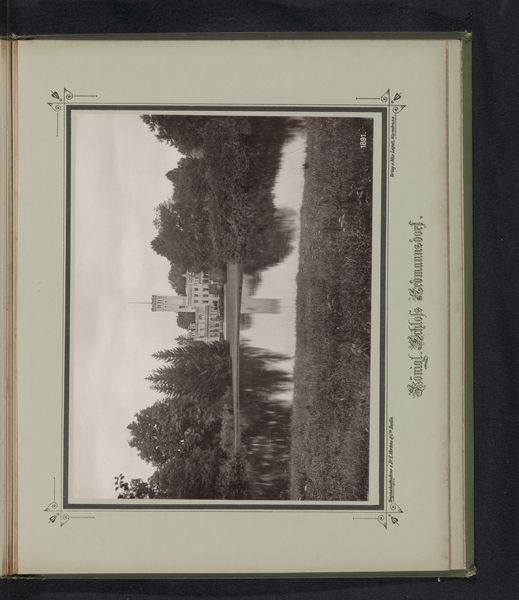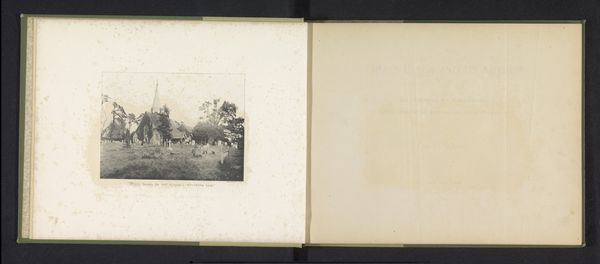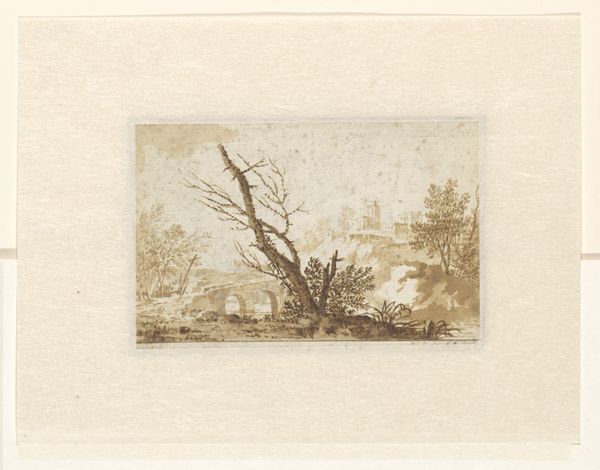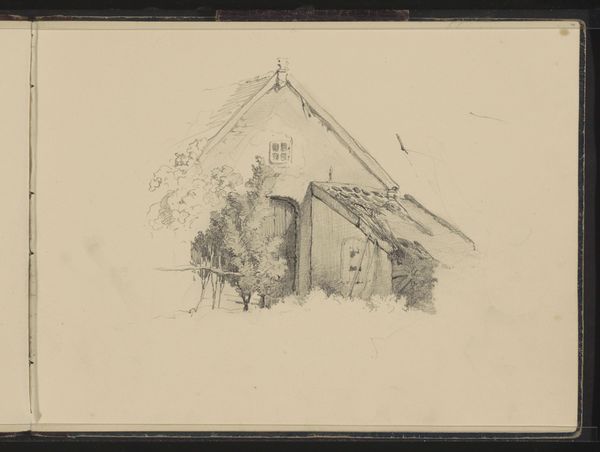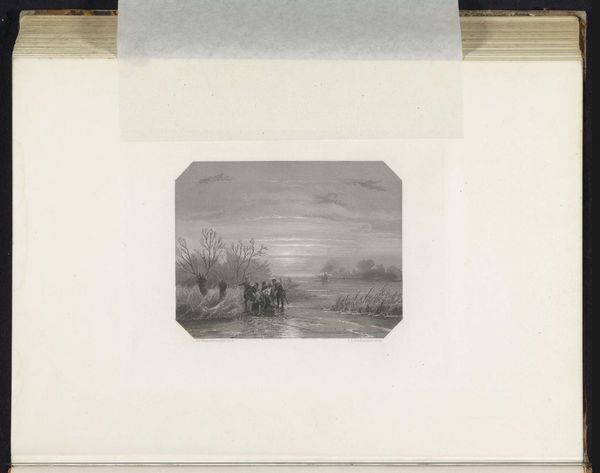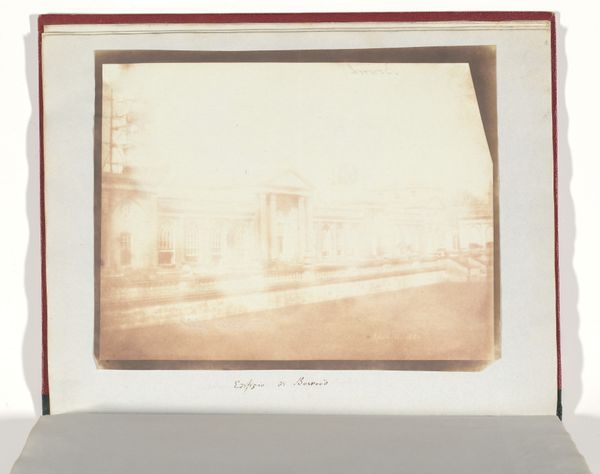
daguerreotype, paper, photography
#
aged paper
#
toned paper
#
homemade paper
#
landscape
#
daguerreotype
#
house
#
paper texture
#
paper
#
photography
#
underpainting
Dimensions: Image: 15.3 x 21.2 cm (6 x 8 3/8 in.) Sheet: 17.6 x 22.1 cm (6 15/16 x 8 11/16 in.)
Copyright: Public Domain
William Henry Fox Talbot made this photogenic drawing, "Presa da una litografia," which translates to "Taken from a lithograph," at an unknown date. It's essentially a photograph of a print, created through early photographic processes involving light-sensitive paper. The image, rendered in sepia tones, depicts a building nestled within a landscape, possibly in the mountains. Talbot's method involved coating paper with silver chloride, exposing it to light through a negative, and then fixing the image. The texture of the paper is visible, lending the image a softness that contrasts with the sharp detail we expect from modern photography. Talbot’s experiments were radical because they offered a way of replicating images, something that was previously only possible through laborious processes like printmaking or drawing. This photogenic drawing embodies the shift from handcrafted images to mechanically reproduced ones, a shift that had huge implications for labor, art, and, ultimately, our consumer culture. This work challenges us to reconsider photography not just as a means of capturing reality, but as a material process deeply intertwined with social and technological change.
Comments
No comments
Be the first to comment and join the conversation on the ultimate creative platform.
